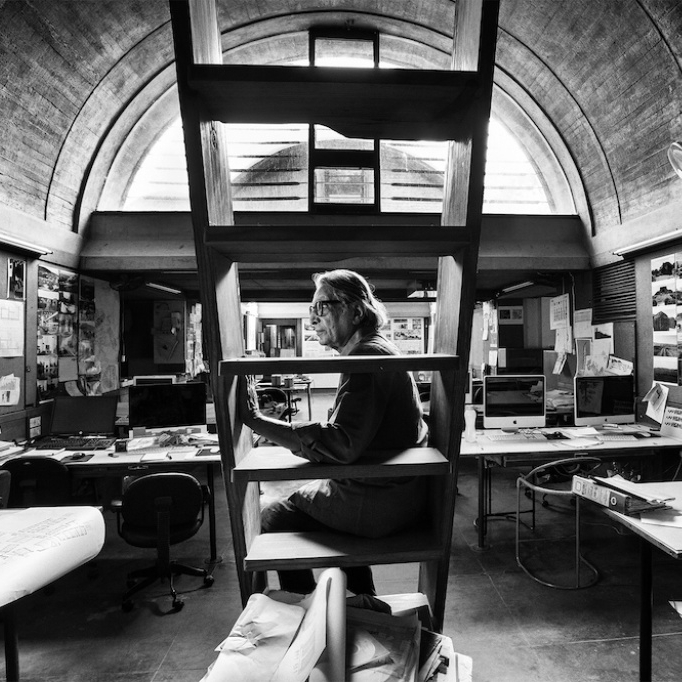On Balkrishna Doshi's recent award
Pritzker Prize and Urban Consciousness
Maxime Faure (MAUD '18)
About ten days ago, for our studio, we were driving toward MassMoca. With research focused on museum campuses, the purpose of the trip was to visit this one-of-a-kind museum typology. While on the drive up, we were playing the very timely Pritzker Game where we rated Pritzker’s recipients from A to C (let's see where we are in sixty years) and speculating on the imminent question: which architect would receive the honorary 2018 crown?
A few days later, on Wednesday March 7th, Indian architect Balkrishna Doshi was bestowed the laureate of architecture’s highest honor. None of us in the car had brought up his candidacy as a possibility to the discussion.
Upon hearing the news, both his proponents and critics have proliferated all forms of media, from the most general to the most specific. It is particularly relevant to examine this year’s announcement through the lens of our field, urban design. In the past ten years, we have seen the word « urban » only once in a Pritzker announcement: in 2011, when Eduardo Souto de Moura received the award. We read that the Burgo Tower was creating a dialogue with « the urban landscape. » Before that, the word urban appeared in 2007 for Richard Rogers’ announcement. With this year’s award, many declensions are aligned in Doshi’s announcement: urban planner, urbanization and urban design. Should we understand here a shift in the role and discourse of the prize? Are we witnessing the rise of a celebrated urban consciousness?
We will be able to answer those questions more clearly in the coming years, but it is evident that through Doshi’s projects, such as the Co-Operative Middle Income Housing in Ahmedabad (1982) or the Aranya Low-Cost Housing (1989), a few kilometers away from Indore, that we see a pressing interest towards issues of the contemporary metropolis. Selecting Balkrishna Doshi as recipient of the Pritzker Prize not only recognizes an accomplished figure of both the 20th and 21th centuries in the field of architecture (and honors the legacy of Le Corbusier and Louis Kahn), but it also showcases to the public sphere design solutions which address critical concerns of affordability, culture, and integrity, all of which promote the universal right to public enjoyment of a place.
When Alejandro Aravena received the Hyatt Foundation’s prestigious medal, there was already speculation on the Pritzker’s ideological agenda at the time. In 2016, with the awarding of the work of his firm ELEMENTAL, the Pritzker highlighted the pressing challenges of the 21st century city: resilience, sustainability and collective space as a key element of the built environment. Therefore, the move to give exposure to those questions today with Doshi seems to confirm an objective for the Pritzker Prize, that being to reveal the role design has in serving the city and its larger society.
Image Bibliography (Courtesy of VSF)
https://archpaper.com/wp-content/uploads/2018/03/Balkrishna-Doshi-2_-courtesy-of-VSF-1024x0-c-default.jpg

